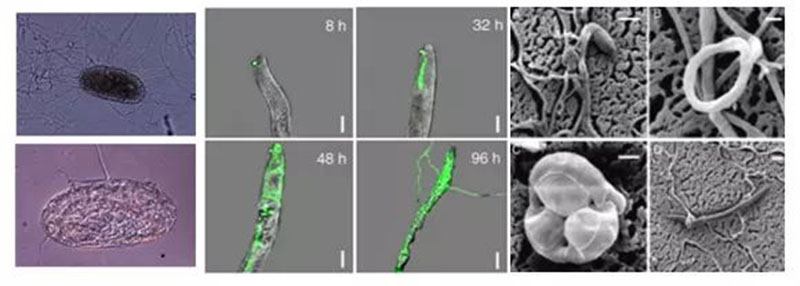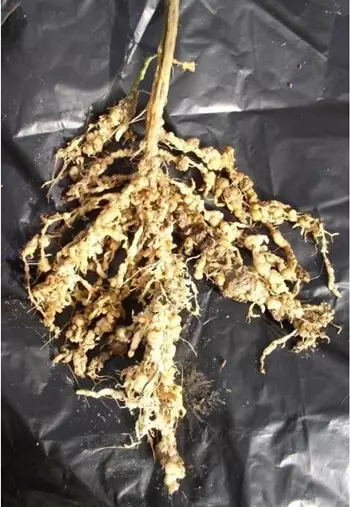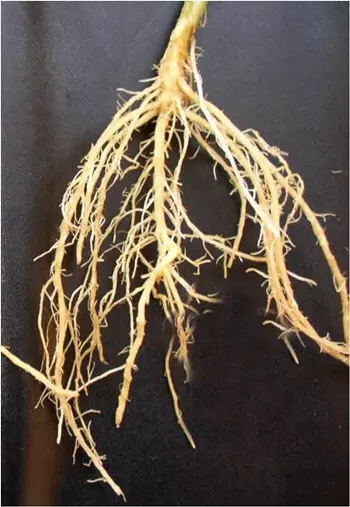Hot Products


PURPUREOCILLIUM LILACINUM
Protect crops from damaging nematodes in soil
PURPUREOCILLIUM LILACINUM,Protect crops from damaging nematodes in soil
Purpureocillium lilacinum, previously known as Paecilomyces lilacinus, it works as nematode pesticide, which can infect plant roots and cause damage to crops. P. lilacinum can parasitize the eggs, juveniles, and adult females, inhibit the hatching of eggs and limit the growth of root-knot nematodes. The nematodes spray also has a high tolerance for pH and can grow on various substrates. If you’re looking for how to control nematode organically in soil, try Novobac Paecilomyces lilacinus products today and take the first step towards healthier, more productive plants and soil.
hiddenValue
USE FOR
MODE OF ACTION
TECHNICAL
BENEFIT
INSTRUCTION
DOCS
-
USE FOR
Target Insect
• Root Knot
• Cyst
• False root knot
• Lesion
• Burrowing
• Ring
-
MODE OF ACTION
Purpureocillium lilacinum is a fungus that is highly effective at controlling various types of nematodes, and even the intestinal roundworms of humans and animals. The nematode pesticide has been shown to have a high rate of egg parasitism of up to 60-70% against Meloidogyne incognita and Nemacystus albicans, and is considered a promising biocontrol agent for preventing and controlling root-knot nematodes.
Paecilomyces lilacinus mode of action is inhibiting root-knot nematodes involves the fungus surrounding the eggs with a viscous matrix of biocontrol bacteria hyphae, which then rupture the surface layer of the egg shell with the help of exogenous metabolites and fungal chitinase. The fungus then invades and replaces the egg shell, and may also secrete toxins to kill the nematodes.

-
TECHNICAL
AVAILABLE SPECIFICATION
Bacteria count : 5 x 10^9 cfu/g , 1 x 10^10 cfu/g
ACTIVE INGREDIENT
Purpureocillium lilacinum Strain
FORMULATION TYPE
Available types include wettable powder and granular forms
PACKAGING
1 kg or 25 kg per bag
SHELF LIFE AND STORAGE
– Shelf life: 18 months
– Store in cool, dry location away from direct sunlight and moisture
– Use within 30 days of opening
– Keep away from children -
BENEFIT
Benefit
- Economically suppression & control of damaging nematodes
- Protect crop from yield loss
- Can increase yields and harvest quality
- Promoting stronger, healthier roots
- Use while post-planting or planting
- Zero residue and can be use for organic farming
See different for yourself

Nematode Control

Nematode Treated
-
INSTRUCTION
Application Rate
- To control nematode populations, spray 1-3 kilograms of the nematode nematicide per acre during planting.
- For ongoing cultivation, reapply 1-3 kilograms per acre every 28 days for season-long treatment.
- This can be done by incorporating the nematicidal product into the soil profile as a lay-by application, or by using methods such as soil drench, infurrow, or drip irrigation at transplanting or shortly after planting.
By following these application guidelines, you can effectively protect your crops from nematode damage.
-
DOCS



CONTACT US

Office 38/1502, No 660,Hanguang Rt., Changsha City, Hunan, China





